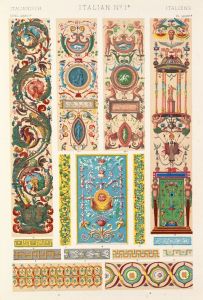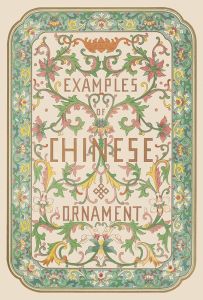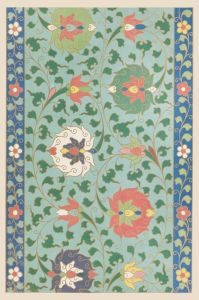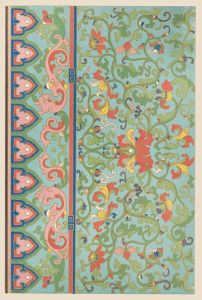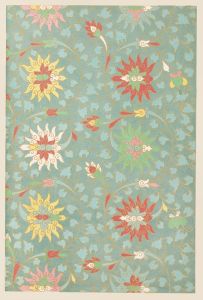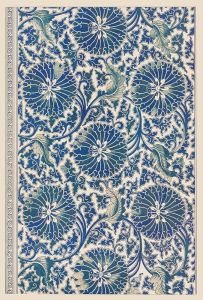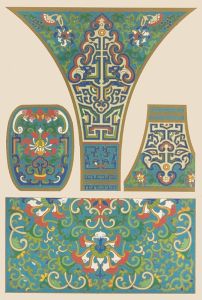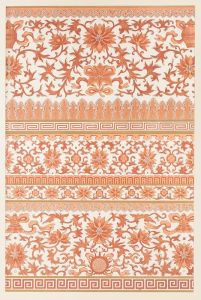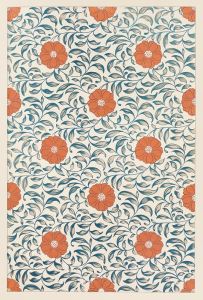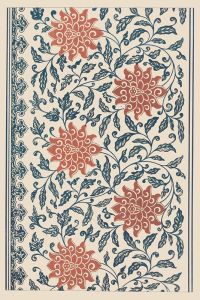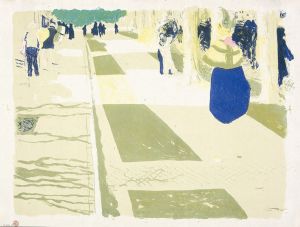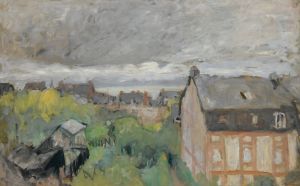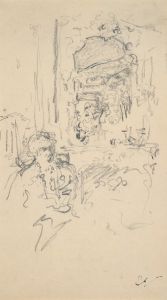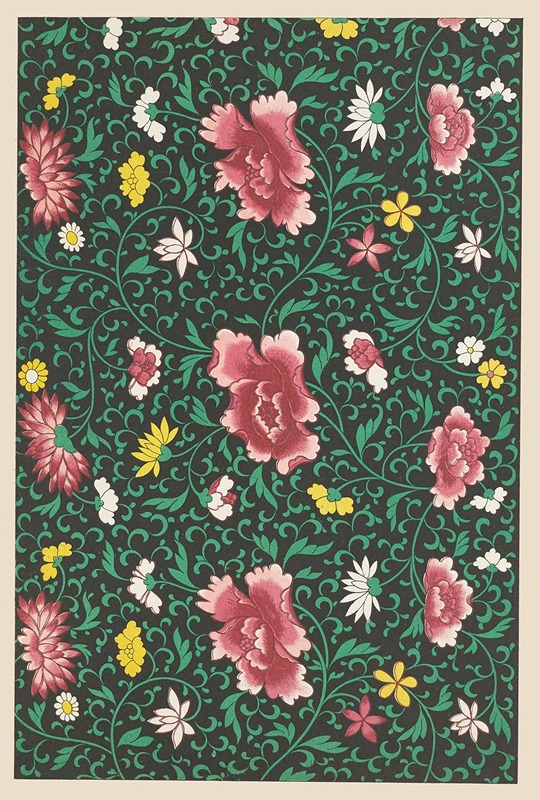
Examples of Chinese ornament, Pl.70
A hand-painted replica of Owen Jones’s masterpiece Examples of Chinese ornament, Pl.70, meticulously crafted by professional artists to capture the true essence of the original. Each piece is created with museum-quality canvas and rare mineral pigments, carefully painted by experienced artists with delicate brushstrokes and rich, layered colors to perfectly recreate the texture of the original artwork. Unlike machine-printed reproductions, this hand-painted version brings the painting to life, infused with the artist’s emotions and skill in every stroke. Whether for personal collection or home decoration, it instantly elevates the artistic atmosphere of any space.
"Examples of Chinese Ornament, Pl.70" is a notable illustration from the influential work "The Grammar of Ornament" by Owen Jones, a prominent British architect and designer of the 19th century. Published in 1856, "The Grammar of Ornament" is a comprehensive collection of design patterns and motifs from various cultures around the world, serving as a seminal reference for architects, designers, and artists of the Victorian era and beyond.
Owen Jones was a pivotal figure in the development of design theory during the 19th century. His work emphasized the importance of studying and understanding historical styles to inform contemporary design practices. "The Grammar of Ornament" was groundbreaking in its systematic approach to cataloging and analyzing decorative arts, and it remains a significant resource in the study of design history.
Plate 70, titled "Examples of Chinese Ornament," showcases a selection of decorative motifs derived from Chinese art and architecture. The illustrations in this plate reflect the intricate and symbolic nature of Chinese design, which often incorporates elements from nature, mythology, and traditional symbolism. Chinese ornamentation is characterized by its use of flowing lines, harmonious compositions, and a rich color palette, often featuring reds, golds, and blues.
Jones's depiction of Chinese ornament in Plate 70 highlights several key elements typical of Chinese decorative arts. These may include stylized floral patterns, geometric shapes, and motifs inspired by animals or mythical creatures such as dragons and phoenixes. The designs often embody cultural and philosophical meanings, reflecting concepts such as harmony, balance, and prosperity.
The inclusion of Chinese ornament in Jones's work underscores the Victorian fascination with the art and culture of the East, a trend that was part of a broader movement known as Orientalism. This movement involved the Western interpretation and imitation of Asian cultures, which, while often romanticized and misunderstood, played a significant role in shaping Western art and design during the 19th century.
Jones's work, including Plate 70, contributed to a greater appreciation and understanding of non-Western art forms among European audiences. By presenting these designs in a systematic and scholarly manner, Jones encouraged a more informed and respectful engagement with the artistic traditions of other cultures.
"Examples of Chinese Ornament, Pl.70" not only serves as a visual record of Chinese design elements but also reflects the broader cultural exchanges between East and West during the 19th century. It exemplifies how designers like Owen Jones sought to bridge cultural divides through the universal language of art and ornamentation.
In summary, Plate 70 from "The Grammar of Ornament" is a testament to Owen Jones's dedication to documenting and disseminating the rich tapestry of global design traditions. His work continues to inspire and educate those interested in the history and theory of design, highlighting the enduring influence of Chinese ornamentation in the world of decorative arts.





